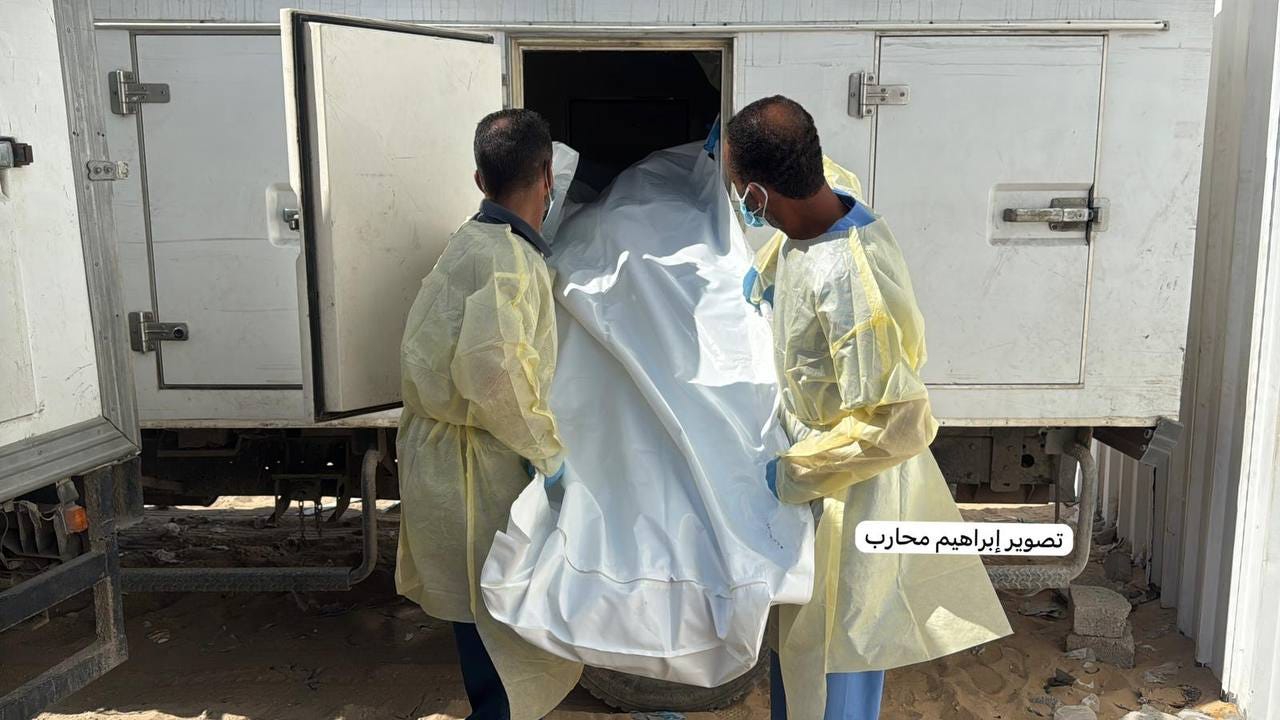Gaza Receives 30 Bodies of Detainees — Many Show Signs of Torture
Medical teams say many of the remains show clear signs of abuse — blindfolds, bound hands, beatings, and indications of field execution — underscoring allegations of systematic mistreatment.
Palestine, PUREWILAYAH.COM — As ceasefire-mediated exchanges continue, Gaza’s Health Ministry announced the transfer of 30 additional bodies via the International Committee of the Red Cross (ICRC), bringing the total number received since the deal to 120.
Medical teams say many of the remains show clear signs of abuse — blindfolds, bound hands, beatings, and indications of field execution — underscoring allegations of systematic mistreatment during detention and transfer.
Bodies Arrive via ICRC; Hospitals Struggle to Identify the Dead
On Thursday, Gaza’s Ministry of Health confirmed that 30 coffins were handed over through ICRC teams and transported to hospital facilities for examination and documentation.
Forensic staff at Nasser Medical Complex and other hospitals are conducting triage, fingerprinting where possible, and rudimentary identification work as families begin to respond to calls to claim their loved ones.
Medical officials warn the identification process remains arduous given the state of many corpses and the damage to records and personal effects across the Strip.
Disturbing Signs: Torture, Blindfolds, Bindings, and Tank Tracks
Doctors and officials in Gaza have reported that a substantial number of returned bodies bear marks consistent with systematic abuse: blindfolds and handcuff marks, bruises and lacerations from beating, signs of field execution, and — in several cases — the imprint of tank treads on bodies, suggesting trampling by heavy military vehicles.
Some reports even describe evidence that organs were removed and bodies crudely stuffed with absorbent material — images and testimony that humanitarian and medical personnel have called “horrific” and that demand thorough, independent investigation.
Exchange Terms and Outstanding Recovery Challenges
Under the ceasefire-mediated arrangement, the exchange mechanism foresees the return of Palestinian bodies in phases while Israel receives the remains or living hostages under parallel procedures.
Hamas has stated it has handed over those remains it could access; further recoveries inside heavily damaged and inaccessible zones, it says, demand specialized equipment and extensive search operations.
Israeli authorities, meanwhile, insist on complete handovers and forensic examinations on their side, fueling ongoing tension over implementation and outstanding cases.
Health officials and human rights observers stress that the apparent pattern of abuse — if corroborated by independent forensic review — may amount to grave violations of international humanitarian law, including mistreatment of detainees and unlawful killing.
The images arriving in Gaza are reopening deep wounds for families and the broader community: beyond the immediate grief, these cases raise urgent questions about detention conditions, accountability, and the fate of those still missing. International organizations and forensic teams must be granted full, unfettered access to examine remains and document evidence.
Gaza’s Medical Teams Call for Aid and Documentation Support
Gaza’s overwhelmed medical and mortuary services are appealing for international technical assistance: forensic specialists, cold-chain supplies, DNA testing support, and secure facilities to process and return bodies to families with dignity.
Authorities in Gaza are also calling on the ICRC and other neutral intermediaries to press for transparency and to facilitate access to sites where additional remains may lie buried beneath rubble.
Eyewitnesses and Officials: A Demand for Truth
Families, medical personnel, and resistance officials in Gaza have demanded immediate, independent investigations into the condition of the bodies, and have accused Israeli forces of systematic abuse during detention and transfer.
For many in Gaza, these revelations reinforce a narrative of deliberate dehumanization and point to the urgent need for international scrutiny and legal accountability.
The arrival of 30 more bodies — many showing signs consistent with torture and extrajudicial killing — is a stark and painful chapter in the aftermath of months of war.
As Gaza’s hospitals work under duress to identify and return the dead to grieving families, the international community must urgently support forensic verification, humanitarian aid, and an impartial process to establish truth and responsibility.
For the families and the nation, the primary demand is simple and immutable: dignified burial, transparent answers, and justice for those taken. (PW)


